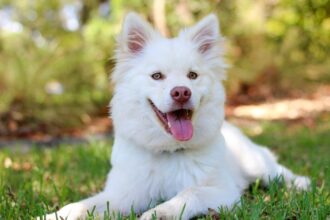As pet parents, we all want our furry companions to run, jump, and play without any discomfort. But just like humans, dogs experience joint issues as they age—or even sooner if they’re an active breed. That’s where UC-II comes in. If you’ve heard of glucosamine and chondroitin for joint health, UC-II takes it up a notch with a scientifically backed approach to improving mobility and reducing stiffness in dogs. Let’s dive into the science behind UC-II, how it works, and most importantly—how long it takes to see results.
What Is UC-II and Why Does It Matter?
UC-II (Undenatured Type II Collagen) is a revolutionary ingredient derived from chicken sternum cartilage. Unlike traditional joint supplements like glucosamine, which primarily provide cushioning, UC-II helps retrain the immune system to stop attacking its own joint cartilage. It’s like teaching your dog’s body to work with its joints rather than against them.
The key difference? UC-II doesn’t just mask symptoms—it addresses the root cause of joint discomfort, making it a game-changer for dogs suffering from arthritis, stiffness, or general mobility issues.
How Does UC-II Work in Dogs?
The magic of UC-II lies in oral tolerance, a natural immune process that prevents the immune system from overreacting to harmless substances. When UC-II is ingested, it interacts with immune cells in the gut, signaling them to stop attacking the body’s own joint collagen. This helps reduce inflammation and prevents further breakdown of cartilage.
In simpler terms, UC-II helps your dog’s body recognize its own joint tissue as a friend, not an enemy. The result? Improved flexibility, reduced pain, and better movement—naturally.
How Long Does It Take for UC-II to Work in Dogs?
Now, let’s get to the big question: When will you see results?
While traditional joint supplements can take months to show noticeable effects, UC-II works more efficiently. Studies suggest that most dogs experience improvement in mobility and comfort within 30 days, with even more significant benefits around the 60 to 90-day mark.
But keep in mind: Every dog is different. Factors like age, weight, activity level, and severity of joint issues all play a role in how quickly UC-II starts making a difference. If your pup is older or has severe arthritis, it might take a little longer to see full results. The key is consistency—daily supplementation is essential for UC-II to work effectively.
Signs That UC-II Is Working for Your Dog
- Here are some telltale signs that UC-II is kicking in:
- Your dog is getting up more easily after resting
- They’re more eager to go for walks or play
- They’re climbing stairs with less hesitation
- Less limping or stiffness, especially in the morning
- A generally happier, more active pup!
If you notice these changes after a few weeks, it means UC-II is doing its job. However, if your dog’s condition is severe, full improvement may take a bit longer—but patience pays off!
UC-II vs. Traditional Joint Supplements: Why It Stands Out
So, what makes UC-II different from glucosamine and chondroitin?
- Requires a smaller dose: Unlike glucosamine, which often requires large doses to be effective, UC-II works in much smaller amounts (usually around 40mg daily for dogs).
- Addresses joint health at the root: Instead of just providing temporary relief, UC-II supports the immune system’s role in maintaining joint health.
- Clinically proven: Multiple studies show that UC-II provides twice the improvement in joint function compared to traditional supplements.
How to Introduce UC-II into Your Dog’s Routine
If you’re ready to give UC-II a try, here’s how to do it right:
- Start with a daily dose—follow the recommended amount based on your dog’s weight.
- Be patient—while some dogs show improvement within a few weeks, others may need a little more time.
- Pair with a healthy lifestyle—a balanced diet, regular exercise, and maintaining a healthy weight will amplify the benefits.
- Monitor progress—keep an eye on mobility changes and consult your vet if needed.
Final Thoughts: Is UC-II Worth It?
Absolutely! Whether your dog is a playful pup, a senior companion, or an active breed that puts extra stress on their joints, UC-II is a natural and effective way to support their long-term mobility. Unlike conventional joint supplements, it doesn’t just provide a temporary fix—it promotes lasting joint health by working with your dog’s immune system.
If you’re looking for a science-backed and vet-approved way to keep your dog moving comfortably, UC-II is worth considering. Give it a shot, and soon enough, your pup will be back to chasing squirrels, jumping for treats, and enjoying life to the fullest!













